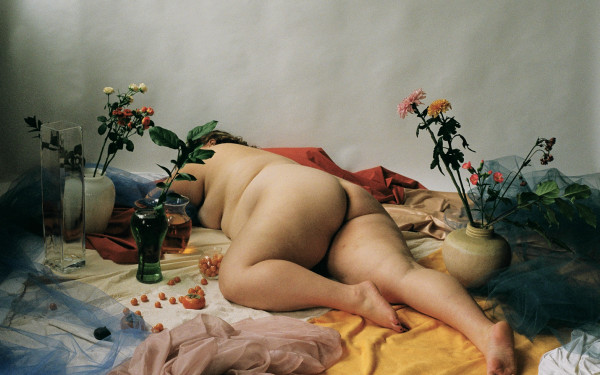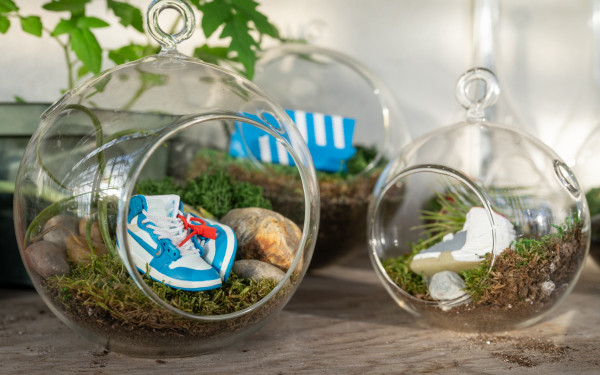Echoes of extinction
Myfanwy MacLeod’s “Song of the Dodo” serves as a cautionary tale to a species lost through ignorance
When Myfanwy MacLeod was approached to design a sculpture for the National Bank Collection, she was influenced by the Victorian era. It had to fit cohesively in Michel-Bélanger Park, which was inspired by Montreal’s Victorian Squares. She settled on a twenty-foot statue of a dodo bird called “The Song of the Dodo.”
When she was a student, a woman in Notre-Dame-de-Grace commissioned MacLeod to paint a dodo bird in her son’s bedroom. The memory served as the inspiration for her sculpture.
MacLeod said that dodo birds are associated with the Victorian era. In 1865, Lewis Carrol published Alice’s Adventures in Wonderland, which features the animal. At the same time, Charles Darwin was bringing recognition to environmentalism, a topic that has greatly influenced her work.
“There were all these things happening around that time that seemed to suit the context of the site,” she said. “That is the initial impetus for the piece. The secondary thing was using something quite awkward to elicit empathy. I think the dodo has that capacity to remind us of things that have been marginalized.”
The dodo was originally from Mauritius and went extinct at the end of the 17th century due to habitat loss, hunting and deliberate killing by Dutch settlers. MacLeod said that dodos had no fear of humans which led to the perception that the birds were unintelligent.
“In a weird way, it was held responsible for its own demise,” she said. “And I think it's a way that we rationalize all sorts of terrible crimes against not only birds and other creatures, but humanity as well. It's a kind of demonization.”
Macleod’s work is one of six sculptures installed at the National Bank Place in Montreal. The pieces were chosen by a selection committee made up of art experts as well as an architect and the landscape architect responsible for designing the surrounding spaces. The committee nominated artists, evaluated proposals and selected the winning projects.
“The Song of the Dodo, to me, talks about the time we live in”, said Jo-Ann Kane, curator at the National Bank Collection, one of Canada’s largest collections of corporate art. “It makes you think about the protection of the birds, it makes you think about fundamentalism. There are so many ways to approach this artwork, but also it makes me smile.”
MacLeod received her bachelor’s of fine arts from Concordia University where she majored in sculpture and developed an interest in public art. She also earned a master's from the University of British Columbia.
“The thing about public sculpture is that it's accessible to everybody,” said MacLeod. “I think a lot of people are intimidated to go into art galleries, especially contemporary art spaces. They may not feel like they understand what the work is or where it’s coming from.”
Someone visiting an art gallery for the first time may be unfamiliar with art terminology or history. Hearing art experts, gallery staff, or patrons discussing art can also feel exclusionary or intimidating. Macleod explained that while a gallery space dedicated to painting or photography can feel less accessible, public art can have more potential to be democratic.
MacLeod has always been interested in monuments and the monumental.
“In the past, [monuments were] for the elite,” she said. “They were creating these monuments to themselves, essentially to their glory and their great deeds.”
She explains that even though many of the monarchies that built monuments have fallen, there is still a conflicted nature to public spaces.
Public art is accessible. It is located in shared spaces and available to a diverse audience with varying socio-economic and cultural barriers. Unlike many museums or galleries that charge entrance fees, public art is free. At the same time, public art is often commissioned, meaning that only those who are financially privileged or come from a high socioeconomic background can afford it, she explained.
According to Lesley Johnstone, a member of the selection committee and the former director of curatorial affairs at the Museum of Contemporary Art, the statue is funny and forlorn, lonely, and at the same time, majestic.
“[Myfanwy] works with popular culture in a very weird way,” said Johnstone. “When you see a work by Myfanwy, you know it's a work by Myfanwy. It's very smart but also funny. There's a criticism involved in the way that she thinks about her practice—what art should be, what the state of the world should be—that is very much her own.”
This article originally appeared in Volume 44, Issue 9, published January 30, 2024.


_600_832_s.png)




-10_600_375_90_s_c1.jpg)